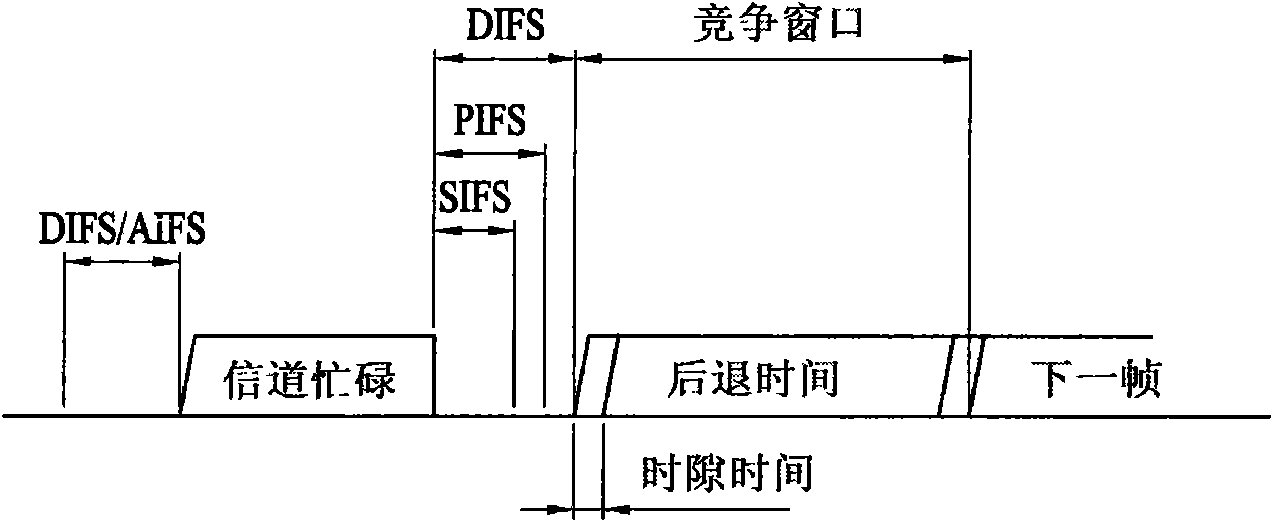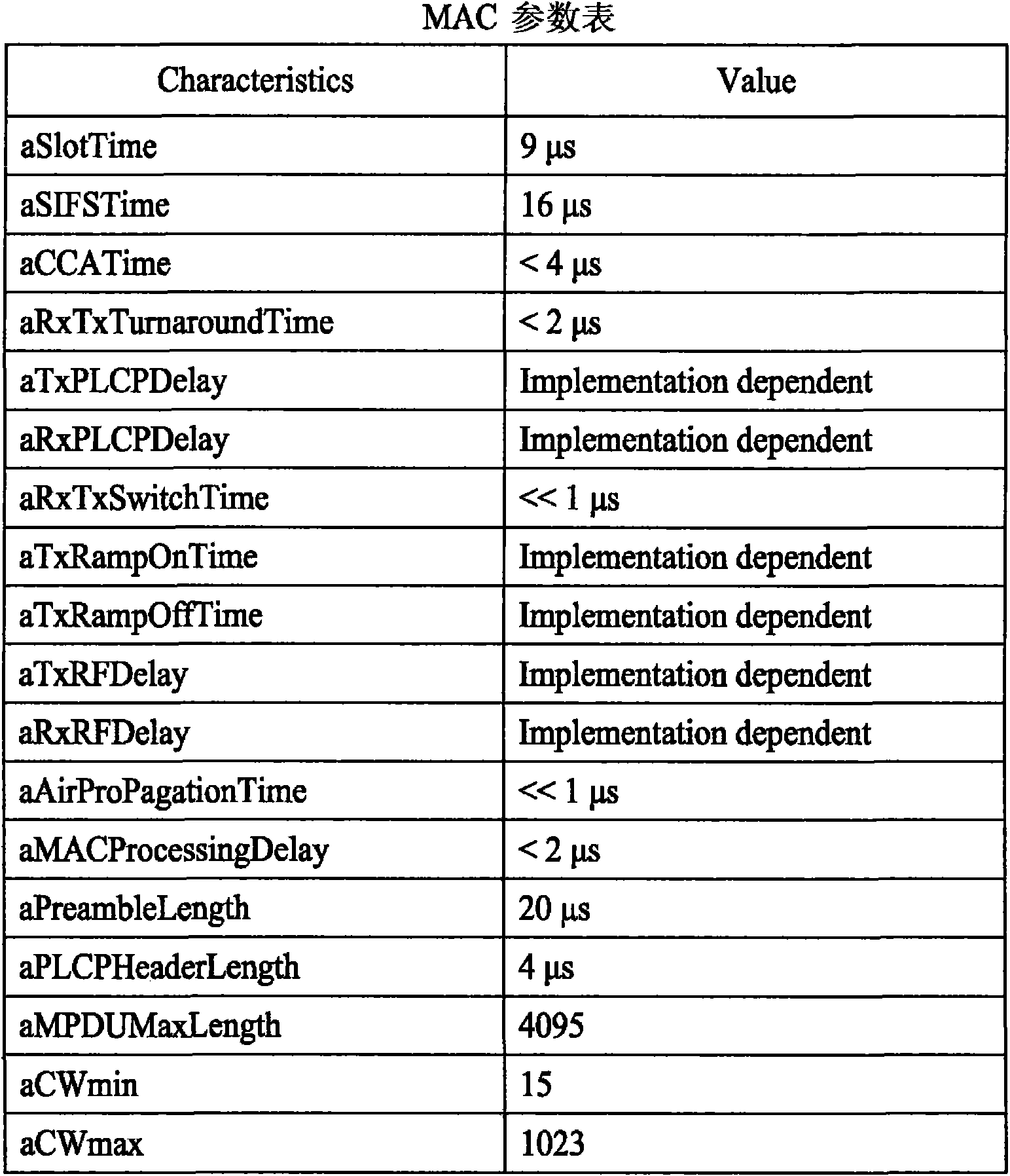Channel continuous noise detection method and device
A channel and noise technology, applied in the field of channel continuous noise detection, can solve the problems of interfering packet transmission, channel noise interference, unable to send data at the same time, etc.
- Summary
- Abstract
- Description
- Claims
- Application Information
AI Technical Summary
Problems solved by technology
Method used
Image
Examples
Embodiment Construction
[0026] Since the availability of wireless bandwidth is limited, the management mechanism for Quality of Service (QoS) in 802.11 networks has gradually increased its importance. The IEEE 802.11e standard proposes to define QoS mechanisms for wireless devices to support bandwidth-sensitive applications, such as video and voice. The IEEE 802.11e standard defines four access types, which include AC_BK (background), AC_BE (best effort), AC_VI (video), and AC_VO (voice). Such as figure 2 As shown, these access types have different preset parameter values. The IEEE 802.11e standard uses these parameter values, such as the minimum contention window (CW min ), maximum competition window (CW max ), arbitration interframe space (AIFS) and transmission opportunity limit parameter (TXOP Limit) to ensure QoS on the wireless local area network.
[0027] In order to identify continuous noise interference, it is necessary to obtain the maximum channel busy time first. If the user sets the ac...
PUM
 Login to View More
Login to View More Abstract
Description
Claims
Application Information
 Login to View More
Login to View More - R&D
- Intellectual Property
- Life Sciences
- Materials
- Tech Scout
- Unparalleled Data Quality
- Higher Quality Content
- 60% Fewer Hallucinations
Browse by: Latest US Patents, China's latest patents, Technical Efficacy Thesaurus, Application Domain, Technology Topic, Popular Technical Reports.
© 2025 PatSnap. All rights reserved.Legal|Privacy policy|Modern Slavery Act Transparency Statement|Sitemap|About US| Contact US: help@patsnap.com



